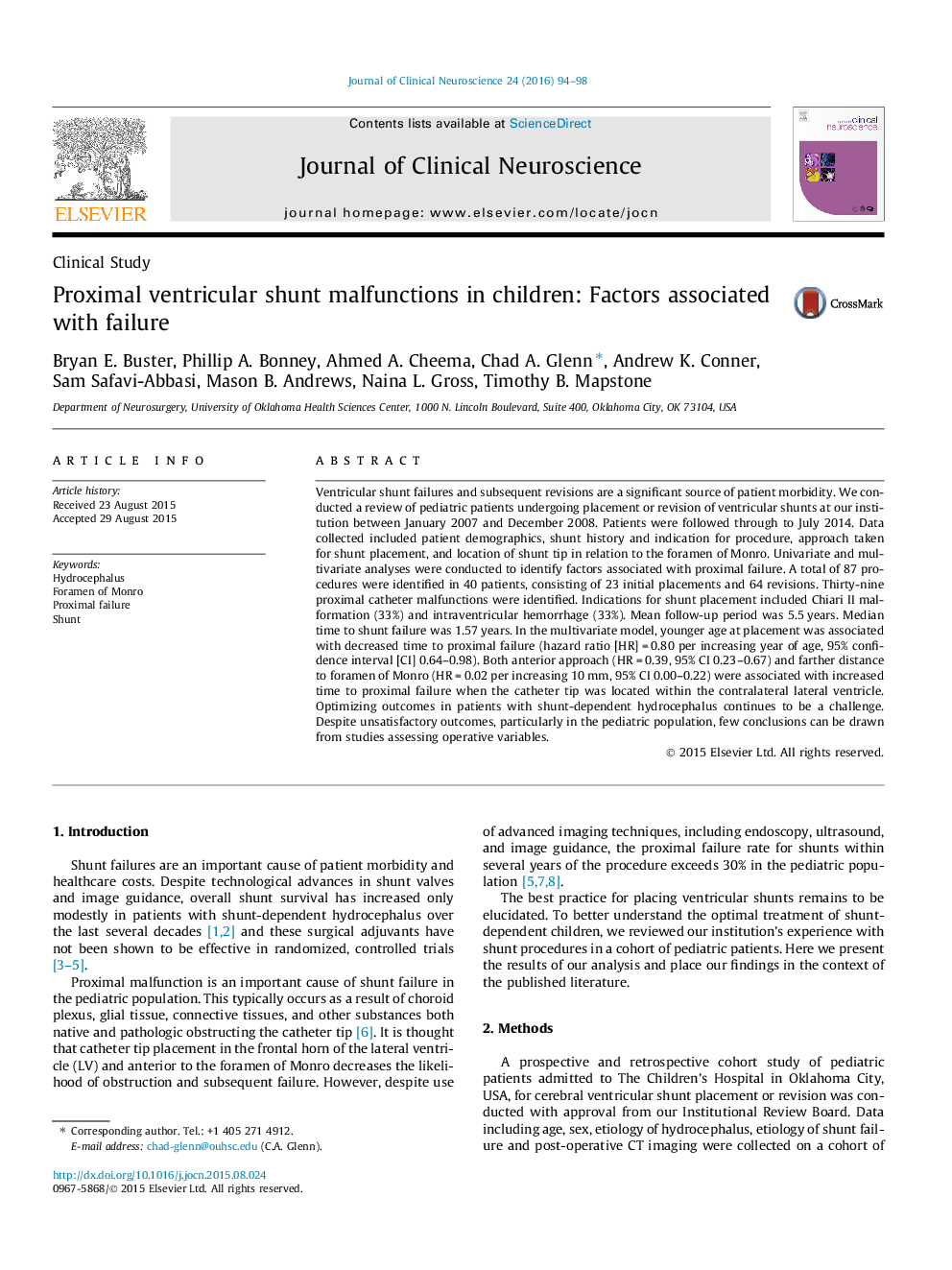| Article ID | Journal | Published Year | Pages | File Type |
|---|---|---|---|---|
| 3058768 | Journal of Clinical Neuroscience | 2016 | 5 Pages |
Ventricular shunt failures and subsequent revisions are a significant source of patient morbidity. We conducted a review of pediatric patients undergoing placement or revision of ventricular shunts at our institution between January 2007 and December 2008. Patients were followed through to July 2014. Data collected included patient demographics, shunt history and indication for procedure, approach taken for shunt placement, and location of shunt tip in relation to the foramen of Monro. Univariate and multivariate analyses were conducted to identify factors associated with proximal failure. A total of 87 procedures were identified in 40 patients, consisting of 23 initial placements and 64 revisions. Thirty-nine proximal catheter malfunctions were identified. Indications for shunt placement included Chiari II malformation (33%) and intraventricular hemorrhage (33%). Mean follow-up period was 5.5 years. Median time to shunt failure was 1.57 years. In the multivariate model, younger age at placement was associated with decreased time to proximal failure (hazard ratio [HR] = 0.80 per increasing year of age, 95% confidence interval [CI] 0.64–0.98). Both anterior approach (HR = 0.39, 95% CI 0.23–0.67) and farther distance to foramen of Monro (HR = 0.02 per increasing 10 mm, 95% CI 0.00–0.22) were associated with increased time to proximal failure when the catheter tip was located within the contralateral lateral ventricle. Optimizing outcomes in patients with shunt-dependent hydrocephalus continues to be a challenge. Despite unsatisfactory outcomes, particularly in the pediatric population, few conclusions can be drawn from studies assessing operative variables.
